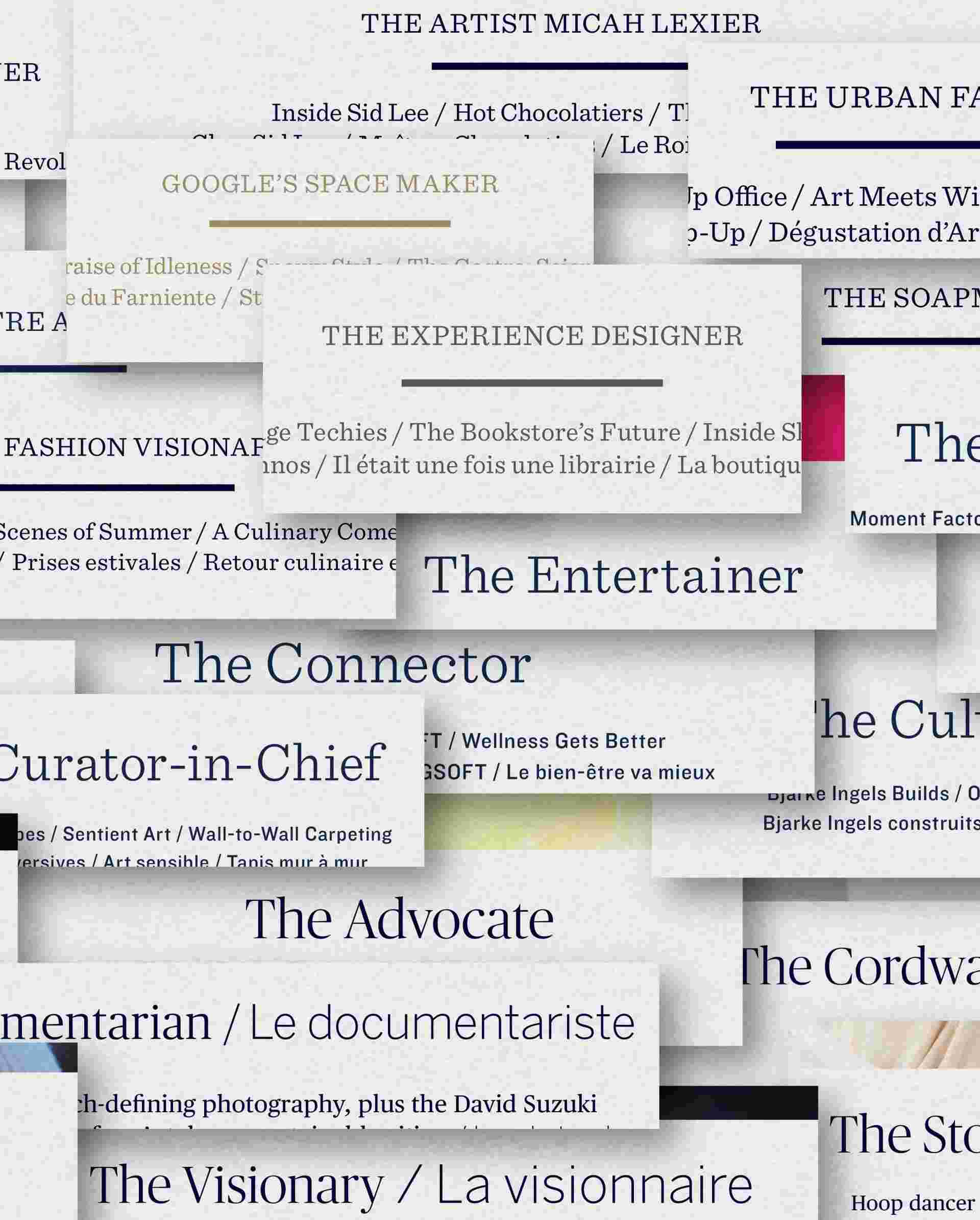
The 10th anniversary of Block
Starting Block If you are an avid reader and consumer of Block magazine, first, thank you, and second, you may notice this issue is a bit different than the rest.
By Mélanie Ritchot
Photos by Luis Mora

Illustrator turned inkmaker Jason Logan blurs the lines between what we think of as urban and natural, inspired by ingredients he forages for in cities.
ONE afternoon in August, the task at hand was to carbonize a peach pit. Other days, it’s foraging for black walnuts or rust somewhere in Toronto.
Though Jason Logan’s idiosyncratic career has included illustration, design and writing, at times all at once — if you have ever wondered what each neighbourhood in New York City smells like, his map “Scents and the City” in The New York Times will help — he is now primarily an inkmaker.
“I just got curious about what ink actually is,” Logan says. And so he began foraging for natural sources of colour around him and experimenting with pigments. “It feels like this quirky niche, but, in fact, it’s one of our oldest forms of communication.”
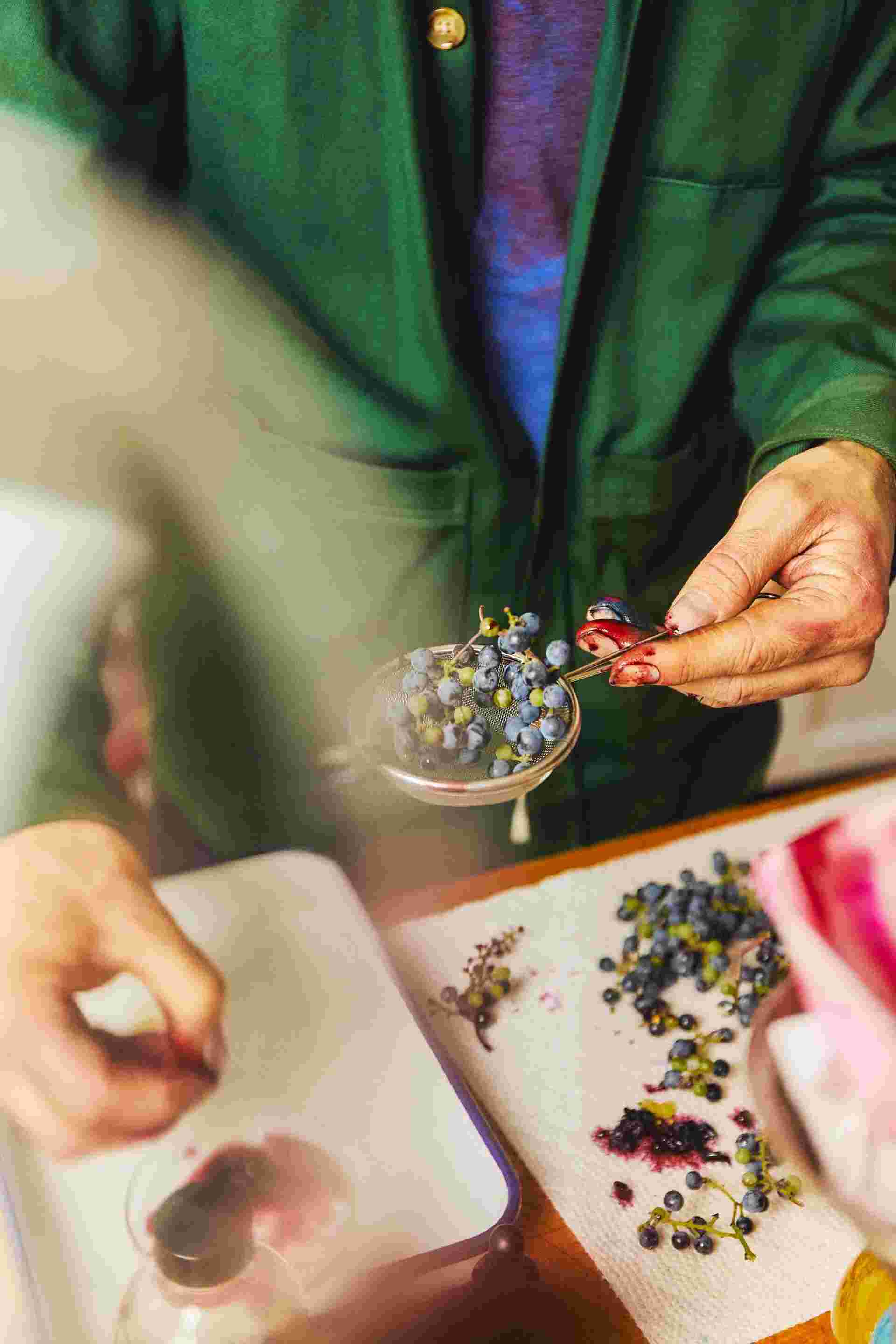
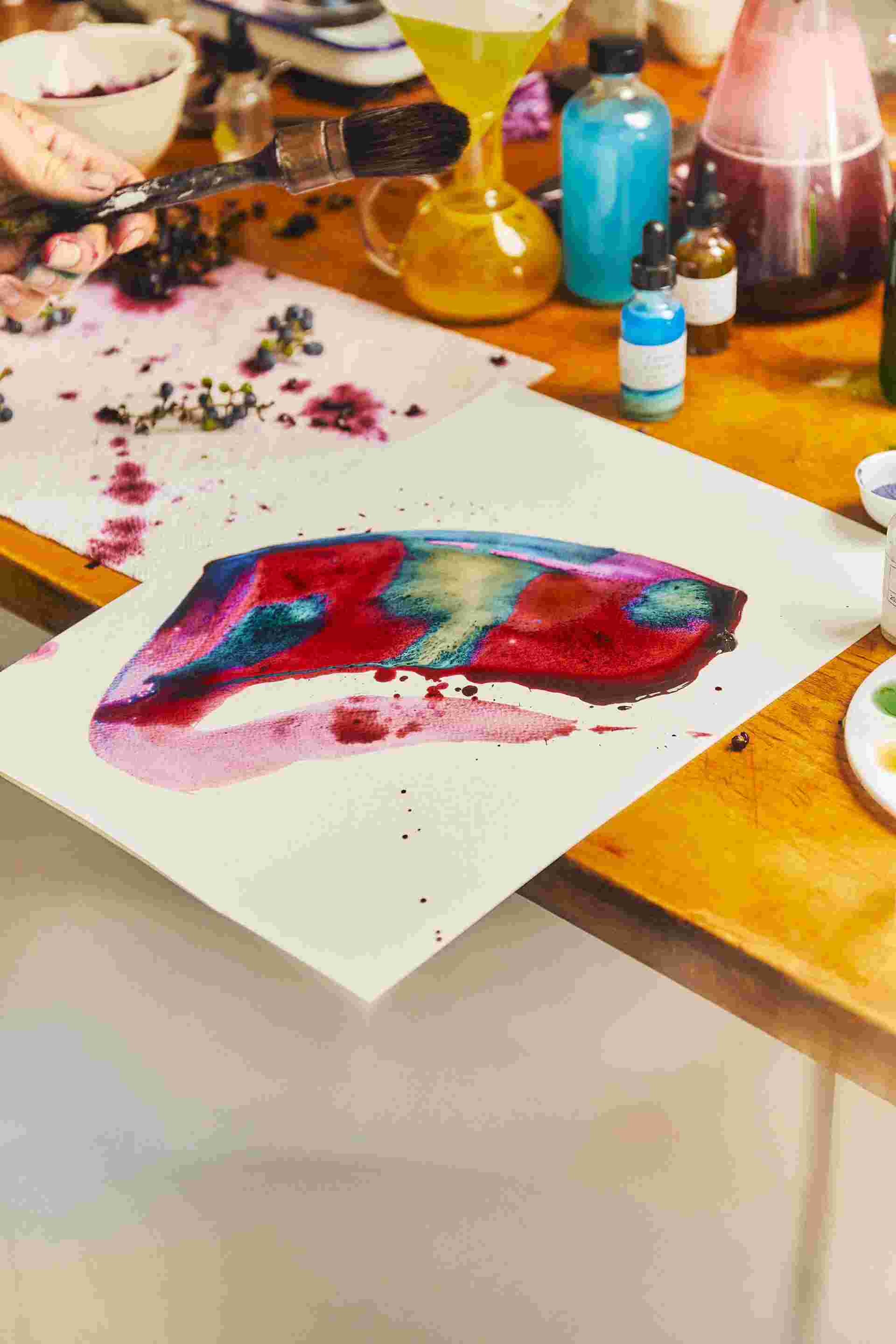
A teal pigment can be extracted from copper and turned into ink, which reacts differently on paper depending on factors like the water used.
Among his books (including an illustrated guide to recovery post-breakup and the 2018 Make Ink: A Forager’s Guide to Natural Inkmaking), recent reads (like Metazoa, a non-fiction title about the origins of thinking) and now-occasional illustrations (which Block is fortunate to feature most issues), Logan says he sees a common thread through his work and how he spends his time: finding the meeting point between visuals and ideas.
Logan founded The Toronto Ink Company in 2014 and shipped thousands of vials of ink to his favourite artists, hoping they’d try it. Now, his ink is used by artists, illustrators and calligraphers around the world. People often look to him when they need a very particular ink or if they want an ink made from a specific ingredient.
The appeal for some is the non-toxic quality of Logan’s ink, while to others it’s the unpredictability of it, depending on factors like the pH of the water used or what he’s harvested that particular year.
“The ink that I make has unexpected qualities when it hits the paper,” Logan says. Even once a recipe is complete, the colours aren’t necessarily fixed. If you squeeze a bit of lemon on a wild-grape ink, it goes from purple to pink, and if you sprinkle a bit of baking soda on it, it turns bluish green. “It really is living.”
That mutable quality of ink — flowing, rippling and trailing brushes across artists’ pages — was brought to new audiences through The Colour of Ink. The film, directed by Brian Johnson, debuted at the Toronto International Film Festival last year and walks viewers through Logan’s inkmaking process and how it comes into being: from foraging for raw ingredients to experimenting to find the perfect hue to seeing a vial plucked out of a shipping box by a master calligrapher in Japan. Between vivid macro shots of different inks, Logan reintroduces viewers to something we encounter every day (and maybe don’t think twice about). “[You leave the] theatre feeling like the world is full of colour,” he says.
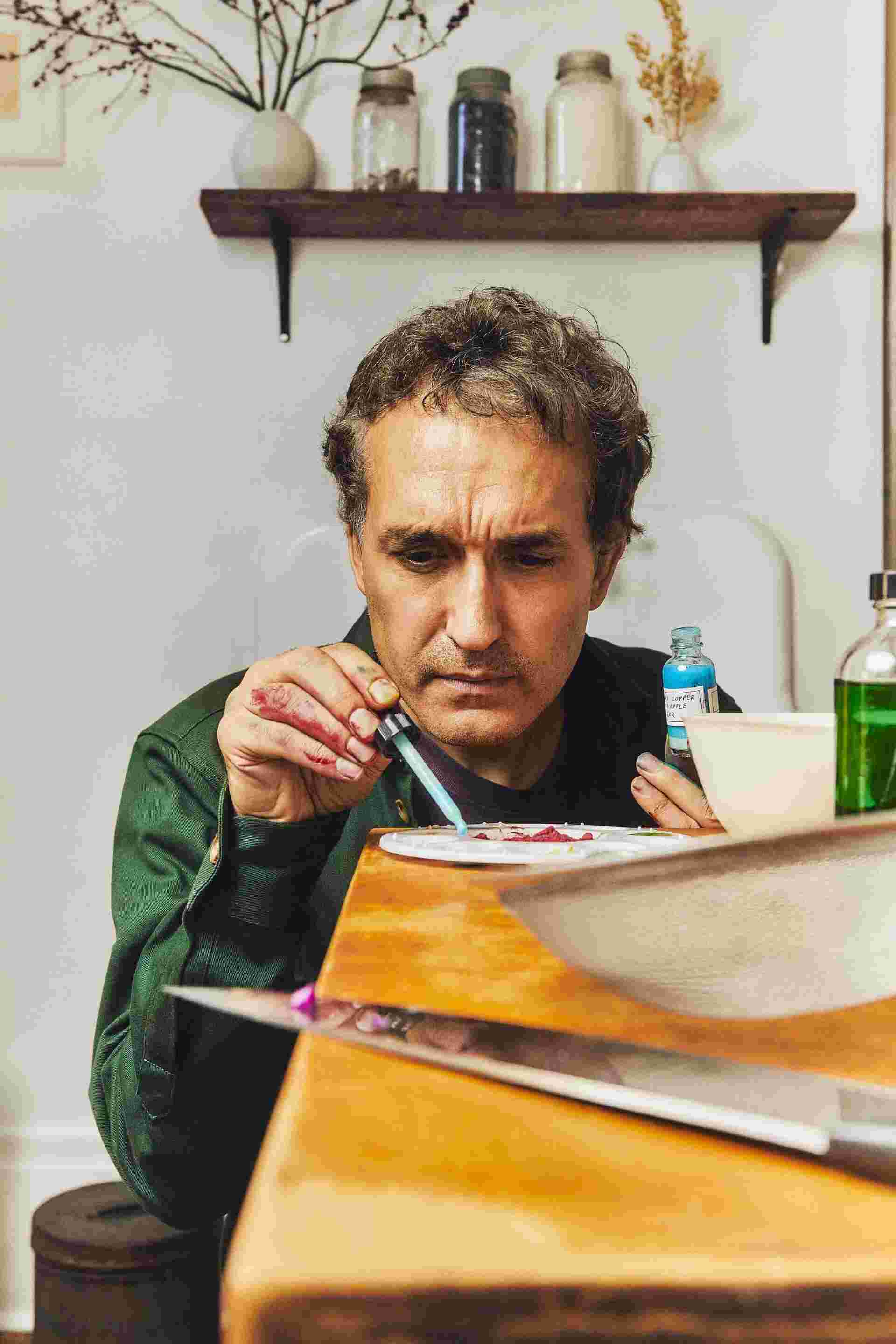

Wild grapes that Logan often finds along railway tracks and fences result in a deep-purple ink.
When Logan first sought to make ink, he realized there weren’t many definitive resources on how to do it. He says his solution was to dig up medieval recipes or to do “strange internet rabbit-hole searches for alchemical texts. People have been making ink for a long time; it was just a bit hidden.”
He found similarities in textile dyeing. “When I’m starting with a new plant or some new weird substance, I usually talk to the people who do natural dyeing first. That gives me a hint about how to start extracting colour. Then I do a lot of fiddling.”
Logan says his book Make Ink is the one he wishes he had when he was starting and learning. When he began getting invited to talk about inkmaking post-publication, he opted to run workshops. “Rather than talking, I would often say, ‘Let’s just go out as a group and make our own ink.’” He adds that the network of people making ink has grown since his book was published.
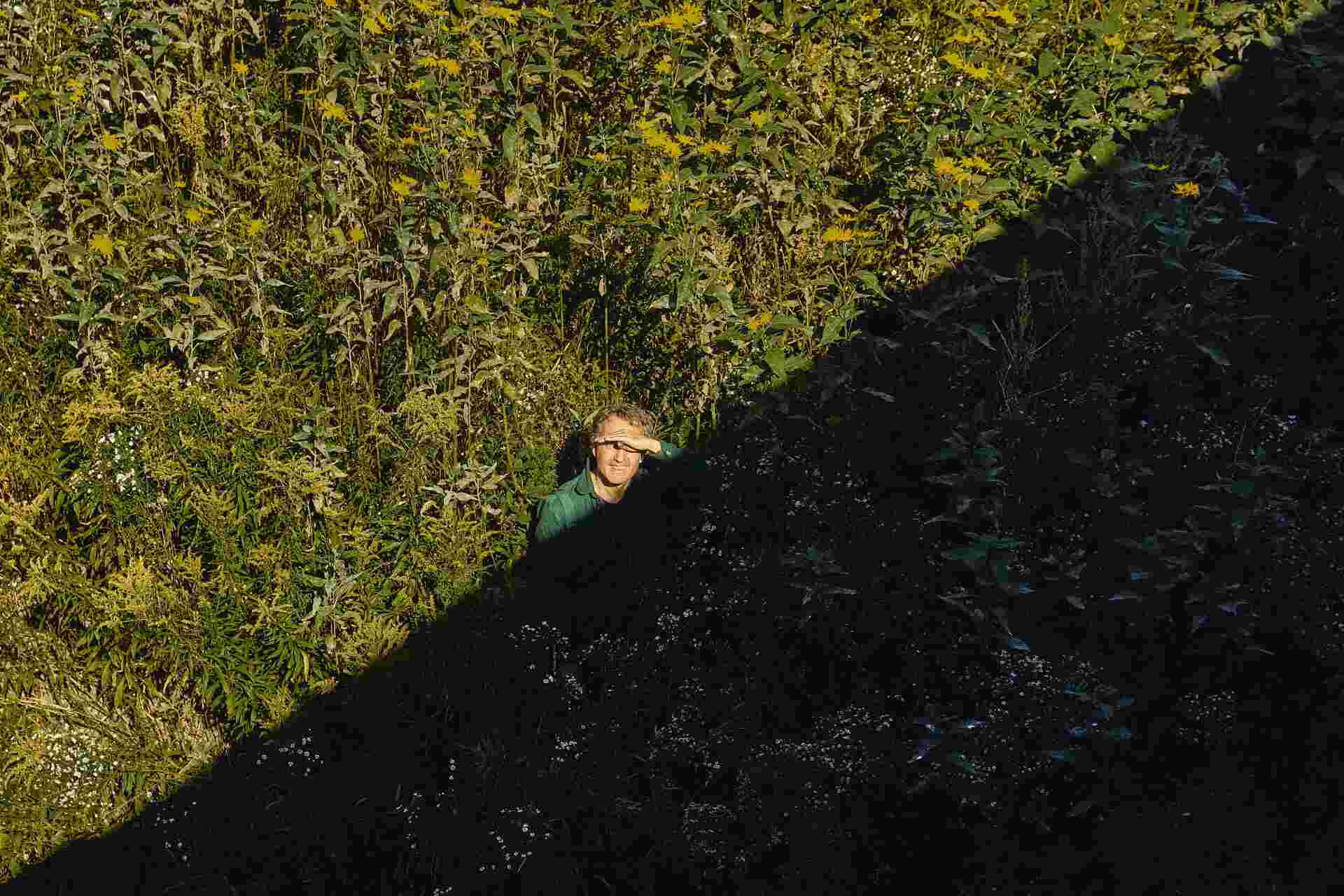
Jason Logan, by Luis Mora, October 3, Toronto.
Ink can be as simple as three elements, Logan explains: a liquid (water in most of his recipes), a pigment and a binder that connects the colour to the liquid. “I try to forage for everything. I like to forage for my own water. I like to forage for the pigments. I use binders like cherry sap. The vast majority of what I put in my inks are things that I can find right at my feet.”
“It doesn’t have to be leaves and berries,” he says. “There are rusty nails and bits of copper wire and drywall dust — all these amazing things that are being underutilized in cities [and] make extraordinary colours.” The word “foraging” is often associated with non-urban environments, but Logan says that as his craft has progressed, he’s become increasingly interested in blurring the line between what we think of as urban and natural.
“It’s almost democratizing the idea of making your own colour supplies by recognizing,” finding value in and using “the stuff on the streets.”